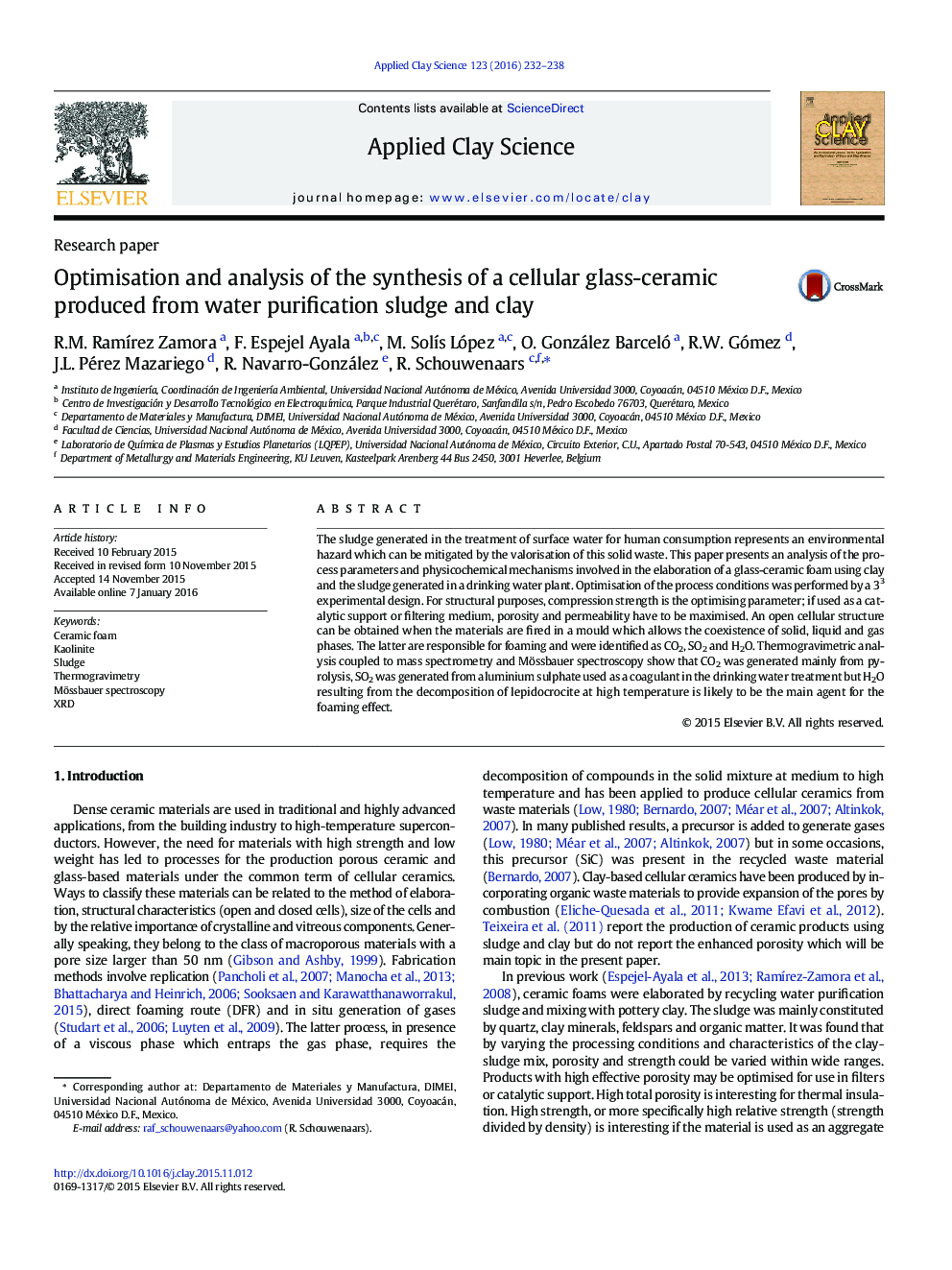| کد مقاله | کد نشریه | سال انتشار | مقاله انگلیسی | نسخه تمام متن |
|---|---|---|---|---|
| 1694135 | 1519061 | 2016 | 7 صفحه PDF | دانلود رایگان |
Higlights
• A glass–ceramic foam using clay and sludge from a drinking water plant is analysed.
• The product helps mitigating the ecological impact of sludge deposition.
• An open cellular structure is created by the coexistence of solid, liquid and gas.
• The product can be optimised either for porosity or for strength.
• H2O is the principal gas produced and is the principal agent in porosity formation.
The sludge generated in the treatment of surface water for human consumption represents an environmental hazard which can be mitigated by the valorisation of this solid waste. This paper presents an analysis of the process parameters and physicochemical mechanisms involved in the elaboration of a glass-ceramic foam using clay and the sludge generated in a drinking water plant. Optimisation of the process conditions was performed by a 33 experimental design. For structural purposes, compression strength is the optimising parameter; if used as a catalytic support or filtering medium, porosity and permeability have to be maximised. An open cellular structure can be obtained when the materials are fired in a mould which allows the coexistence of solid, liquid and gas phases. The latter are responsible for foaming and were identified as CO2, SO2 and H2O. Thermogravimetric analysis coupled to mass spectrometry and Mössbauer spectroscopy show that CO2 was generated mainly from pyrolysis, SO2 was generated from aluminium sulphate used as a coagulant in the drinking water treatment but H2O resulting from the decomposition of lepidocrocite at high temperature is likely to be the main agent for the foaming effect.
Journal: Applied Clay Science - Volume 123, April 2016, Pages 232–238
